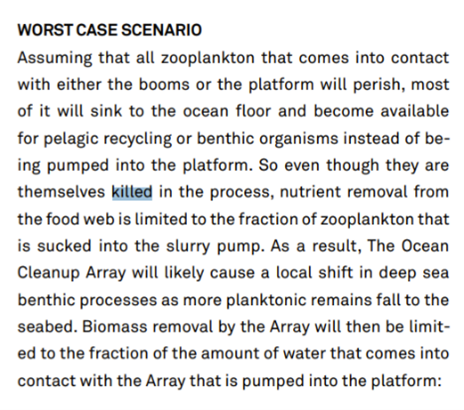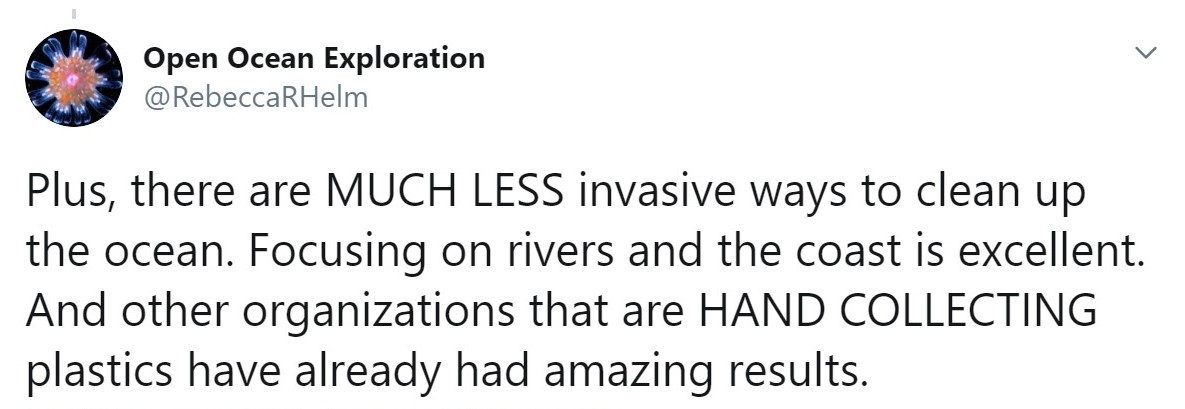This tweet claiming The Ocean Cleanup will generate a “blood bath” is making the rounds.
It is also based on fiction, not science.
A thread. https://twitter.com/RebeccaRHelm/status/1301539428943368193">https://twitter.com/RebeccaRH...
It is also based on fiction, not science.
A thread. https://twitter.com/RebeccaRHelm/status/1301539428943368193">https://twitter.com/RebeccaRH...
The mentioned numbers refer to an estimate from a recent study by Falk-Andersson et al. (2020) for the amount of plankton a cleanup operation would encounter. It refers to microscopic zooplankton, not neuston, and certainly not blue dragons as Helm’s tweet suggests.
Helm forgets to add that the study also states that, even if worst is assumed, this “may be negligible”.
These numbers are based on data from the Faroe shelf (Jacobsen et al.) and from 300m below the surface in the western Pacific (Yang et al.); not from the GPGP surface, which is an important difference, as the authors themselves explain:
Then the “blood bath”. Besides the fact that zooplankton don’t have blood, the tweet claims we ourselves reported zooplankton is “likely to be KILLED”. This is not true. Paper references our 2014 feasibility study, in which we provided a Worst Case Scenario, not a prediction.
In essence, the only thing the study’s numbers portray is an estimate of the total amount of plankton in the water that encounters the cleanup systems (which is btw equal to the water encountered by just a few ocean-going vessels)
In her next tweet, Helm claims “the scientists have concluded that there is no way that risk outweighs the benefit”. Yet, nothing of the sort is claimed by the Falk-Andersson et al. study! (link to study: https://www.sciencedirect.com/science/article/abs/pii/S0048969720346465)">https://www.sciencedirect.com/science/a...
Helm then goes on to refer to the cleanup systems as “UNMONITORED NETS” (they are not unmonitored), while downplaying the 100 million+ kilos of plastic we plan to collect as “small amounts of plastic”.
Helm suggests river cleaning and collecting ghost nets by hand as better alternatives. We fully support these (we’re actually engaged in both), but we believe these are complementary, not alternatives, to ocean cleanup systems.
River cleaning deals with the source, not the legacy pollution, and ghost net hunting is only viable for the few % of the patch that’s contained in very large fishing nets (we aim to clean 90%).
As our mission is to save the ocean from plastic, the environmental impact of the cleanup is naturally a concern we share with Helm and fully agree the side-effects (positive and negative) must be properly and objectively assessed.
This is why we demand environmental impact assessments for every project, our scientists actively study the ecosystem of the patch and continue to carefully monitor our deployments as we progress, in line with the recommendations of the recent study. (eg: https://theoceancleanup.com/updates/mission-one-environmental-monitoring-results-available/)">https://theoceancleanup.com/updates/m...

 Read on Twitter
Read on Twitter






